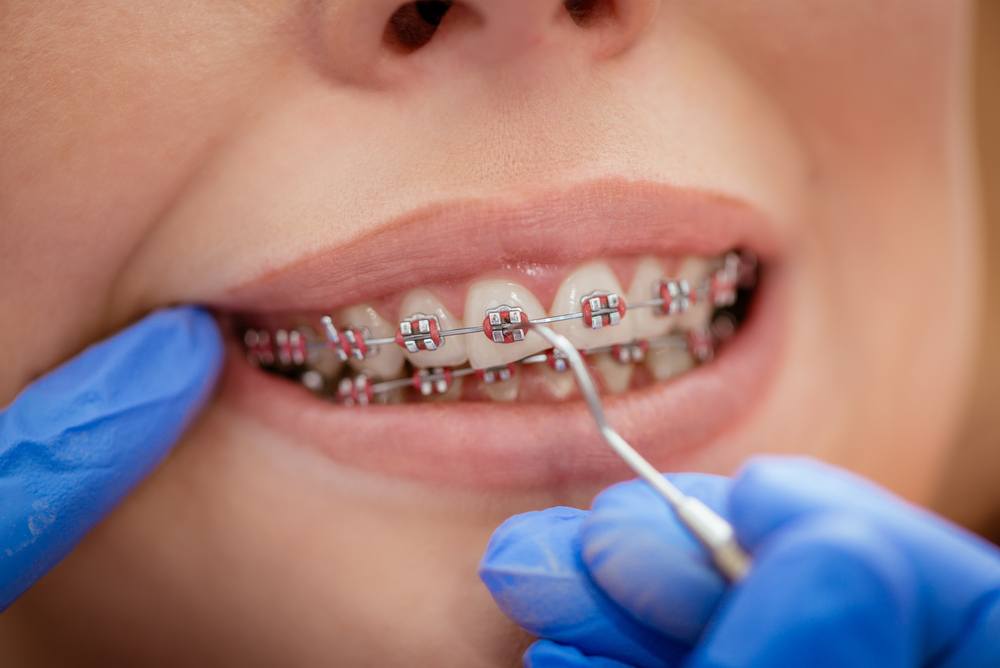Comprehensive Overview to Orthodontics Procedures for Dealing With Oral Misalignments
Recognizing the complexities of each procedure, including their devices, advantages, and potential downsides, is essential in making educated decisions regarding one's orthodontic therapy. As we browse through the extensive overview to orthodontic procedures for fixing dental imbalances, the complex information of each technique will certainly unravel, losing light on the course towards a practical and unified dental placement.
Orthodontic Procedures Overview

Routine modifications and surveillance are critical parts of orthodontic treatment to guarantee progression is on track and to make any kind of needed adjustments along the way. By undergoing orthodontic procedures, clients can not only achieve a straighter grin however also improve their overall oral wellness and feature.
Typical Dental Braces: Exactly How They Function
When considering orthodontic therapies for oral misalignments, conventional braces stand apart as a time-tested technique for fixing teeth placing. Typical dental braces consist of brackets, cables, and bands that interact to use continual pressure on the teeth, gradually moving them right into the wanted placement. The brackets are affixed to the teeth making use of an unique adhesive, and the cords are threaded through the braces. By adjusting the tension of the cables, orthodontists can regulate the instructions and pressure related to each tooth, directing them into appropriate positioning in time.
As stress is used to the teeth with the braces, the bone surrounding the teeth is improved to support the new tooth settings. Individuals will certainly require routine changes at the orthodontist's workplace to ensure the braces proceed to use the right pressure for efficient teeth motion.
Unseen Aligners: Cons and pros
Invisible aligners supply a practical and discreet option to traditional dental braces for remedying dental imbalances. These clear, custom-made trays are basically invisible when worn, making them an appealing alternative for individuals seeking a much more aesthetically pleasing orthodontic therapy. One of the main benefits of unnoticeable aligners is their removability, allowing for less complicated maintenance of dental hygiene compared to traditional dental braces. People can eliminate the aligners prior to eating or cleaning their teeth, minimizing the risk of food getting stuck in the appliance and simplifying the cleaning procedure.

Surgical Orthodontic Options
Surgical interventions in orthodontics present sensible choices for attending to complex oral imbalances that might not be effectively fixed with standard orthodontic therapies. While invisible aligners and conventional braces can deal with several orthodontic problems, certain instances call for medical treatment to attain optimal results. Surgical orthodontic alternatives are commonly suggested for severe malocclusions, significant jaw discrepancies, and situations where the underlying bone structure requires alteration to attain proper placement.
One common surgical orthodontic treatment is orthognathic surgery, which includes repositioning the jaws to correct useful concerns such as problem speaking or chewing. This surgical treatment is frequently carried out in cooperation with an orthodontist who helps line up the teeth prior to and after the procedure. Surgical orthodontics might also include procedures to reveal affected teeth, eliminate excess periodontal cells, or reshape the jawbone to develop an extra unified face account.
Prior to taking into consideration surgical orthodontic choices, people go through a detailed examination to establish the requirement and possible benefits of such treatments. cumming orthodontist. While surgical treatment might appear daunting, it can substantially enhance both the feature and aesthetic appeals of the smile in situations where standard orthodontic therapies browse around this site fail
Retainers and Post-Treatment Treatment

Failing to conform with post-treatment treatment directions can result in relapse, where the teeth slowly relocate back in the direction of their original settings. Regular retainer wear, excellent oral hygiene, and normal oral check-ups are essential for maintaining the results attained through orthodontic surgical treatment and making certain the lasting security of the fixed oral placement.
Conclusion
In final thought, orthodontic procedures offer different choices for correcting oral misalignments. Surgical orthodontic choices are readily available for much more extreme imbalances. On the whole, orthodontic procedures can efficiently boost oral health and wellness and aesthetic appearance.
As we browse with the thorough overview to orthodontic treatments for remedying dental misalignments, the intricate details of each technique will certainly unfold, losing light on the course toward a practical and unified dental placement. - orthodontics
One of the most common orthodontic therapies is the use of dental braces, which consist of metal brackets and wires that use gentle pressure to gradually move teeth into the preferred placement.When thinking about orthodontic therapies for dental misalignments, traditional dental braces stand out as a time-tested technique for fixing teeth placing. Additionally, invisible aligners may not be ideal for complex best dental office orthodontic issues that call for even more significant teeth motion, as they are normally suggested for light to modest instances. Retainers are personalized orthodontic devices designed to hold teeth in their remedied placements after the completion of orthodontic treatment.